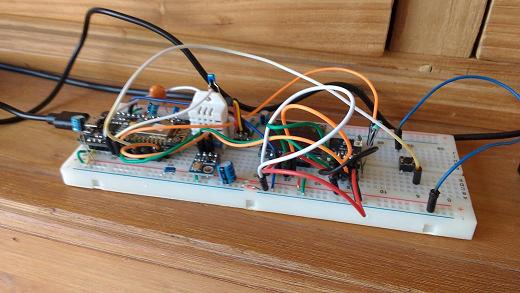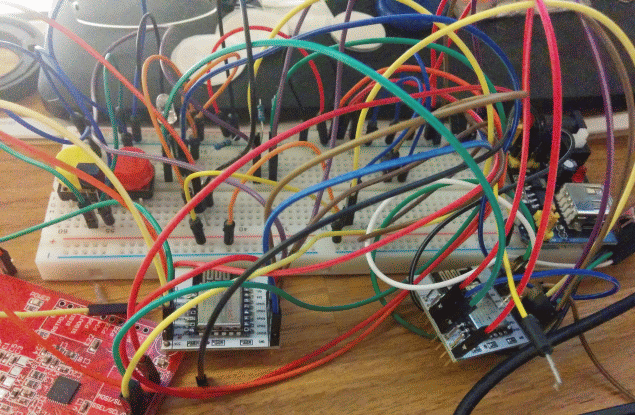Difference between revisions of "Breadboards"
| Line 20: | Line 20: | ||
[[File:Bread2.png]] | [[File:Bread2.png]] | ||
| + | |||
Another fine example, contributed by tozett | Another fine example, contributed by tozett | ||
Revision as of 15:09, 2 March 2016
Need I say more? A breadboard, however very handy during the creative process, also incorporates many weird phenomena, we call unexpected behavior.
Any wire electronically consists of a network of resistors, coils and capacitors. Especially in high frequency environments, this can cause problems in electronic circuits. If you want to learn more about this interesting subject, there is enough of it on the WWW. For instance [1]
Most of these problems occur at high frequencies, but do not be mistaken, the ESP is just that, a high frequent circuit. Also something simple as flipping a switch easily causes interesting high frequent transients.
What can you expect on breadboards and how can you suppress it?
1 - bad contact 2 - picking up rf transients 3 - resistance
Another fine example, contributed by tozett


